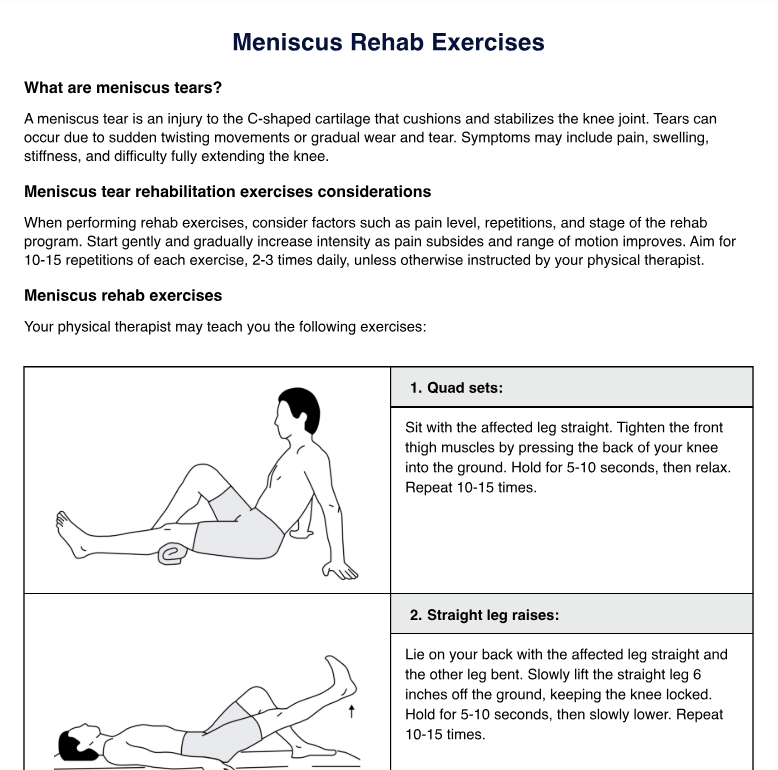A comprehensive meniscus rehab program typically incorporates a variety of exercises targeting muscle strengthening, flexibility, and functional movement. Examples include quad sets, leg raises, heel slides, step-ups, wall squats, calf raises, and hamstring curls.

Meniscus Rehab Exercises Handout
Download our free Meniscus Rehab Exercises Handout, perfect for physical therapists to give to patients for their home exercise program.
Meniscus Rehab Exercises Handout Template
Commonly asked questions
Patients should perform meniscus rehab exercises regularly, typically 2-3 times daily, following specific repetitions and sets prescribed by their physical therapist. The frequency may vary based on individual patient needs and the rehabilitation stage.
Yes, many meniscus rehab exercises can be safely performed at home with proper instruction and guidance from a physical therapist. It's essential to ensure patients understand the correct technique and know any modifications necessary to prevent injury.
EHR and practice management software
Get started for free
*No credit card required
Free
$0/usd
Unlimited clients
Telehealth
1GB of storage
Client portal text
Automated billing and online payments











